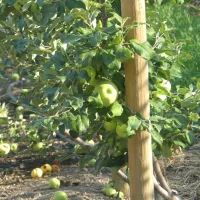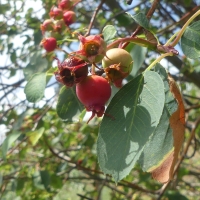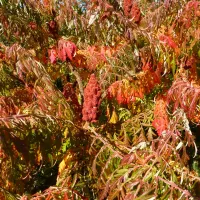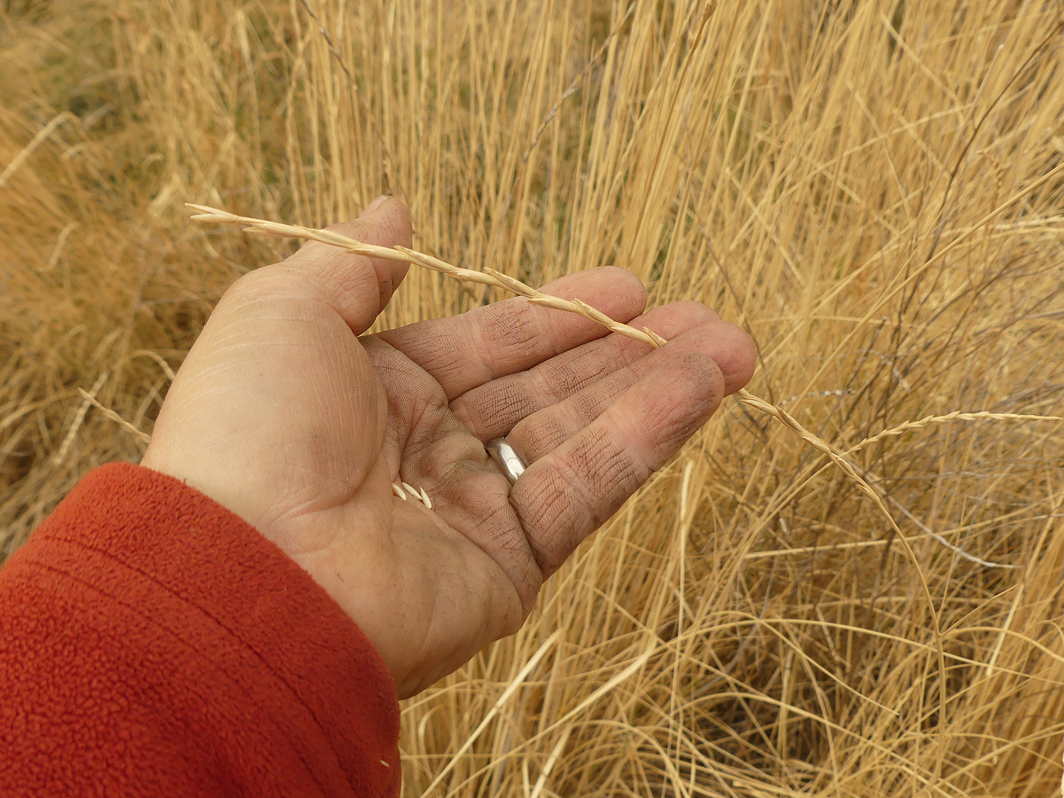Imagine if you could ride a horse out of your country and arrive in Heaven.
Hillsideon the Kooskooskie River
The land is written with stories, in stone, water and animals, across some 16,000 years of memory. From even before it was land. Some of these are spiritual stories. A mission was started below this bear paw by the Missionary Henry Spalding in 1838.
And then imagine if you discover that it is hell. The disillusioned one? In this case, Narcissa Whitman:

Narcissa, looking very idealized.
Idealistic, she certainly was, too. She left an engagement to the missionary-to-be Henry Spalding to marry the missionary Marcus Whitman, a man whom she hardly knew, because he was going to go west first, and there was no time to waste. She was the first American woman to cross the Rocky Mountains. Kind of the Amelia Earhart of the 1830s.
In 1836, Narcissa and her husband Marcus had come west with a trade caravan to the annual fur trade rendezvous in the Rocky Mountains — Marcus’s third. The pair then set up a mission outside of the winter camp of Chief Peopeomoxmox, an Imperial administrator who controlled the land and water from the Pacific Ocean to the Blue Mountains and south to the Great Basin in California. It was, in other words, much like travelling to Rome to meet Caesar, except this time it was to meet God, an ecstatic, apocalyptic trip, meant to ride right into Heaven in the last days, sweeping up souls who needed none of the lengthy education that was the stock and trade of Methodism. These people were already ready to be transmuted into God en masse in the sudden spiritual conflagration that usually took years of study, or, and that was the thing, a few days camping in the wilderness and a revival show.
Revival Meeting, 1839. Note the tents and the wilderness. Narcissa did. Source.
You’d want to be there for that, and she was. She even announced that her life was over; she was in God’s service now.
Methodist camp meeting, circa 1829.
What a liberation for women this must have been.
It was a projection. What was really waiting was not God and not land either. This was waiting, for one:
Itseyehyeh’s Fishnet
It’s here that Itseyehyeh (the sound of the ancestor who walks around as a wild dog these days yipping at the moon) taught the Nimiípuu how to fish for salmon on the Kooskooskie River. The people would have watched the cliffs rise out of the receding water of the post-glacial floods. This isn’t a still scene, in other words. It’s a film, a kind of Youtube demo video of its day. It only looks like a mountain. Photo by Harold Rhenisch
Land and God would have to be planted here by force. This was a land of stories. The land was its own map. Or, rather, the land and the people together.

The Two Cayuse Sisters
A Liksiyu story you can walk in still today, yet will you see it? See who didn’t here.
Marcus and Narcissa had come with good intentions. They had answered the call of the Flathead Iroquois from Kahnawake, who had settled in the Rocky Mountains after leaving David Thompson’s exploratory expedition in 1809. They were looking for Catholic priests who could protect their families and their Flathead kin through marriage from the violence of, well, fur traders, mostly. The story is here. In other words, they were asking for mercy, the deepest spiritual attribute in the traditional cultures of the Plateau, from the one institution in a revolutionary state that had the means to provide it. It was a strong attribute in the USA as well. It might have worked.
Teaching Bible 1830
Instead of a union of cultures, what was heard was a call from wild people for spiritual salvation, which methodists understood as a cry for civilization, law, order, education, harnessing the wilderness and transforming it into productive buildings and a certain kind of rational institution, which, in case you’ve forgotten, means:
Downtown Los Angeles
A civic space. Source.
Again, a projection. The Whitman’s version, hand-made, looked like this:
Waillatpu Mission
This is what Marcus achieved with an axe, 1500 miles from the nearest American city (St. Louis) and a half-day’s ride from the Hudson’s Bay Company store at Wallula. The picture was drawn after the Oregon Trail passed through. That’s it in the foreground.
A structured urban space it still was, just as shocking in the 1830s as the thought of a 150-kilometre-long city in Saudia Arabia is today.
The Line: two tall apartment blocks 150 km long, with a courtyard in between.
Talk about an impenetrable barrier to wildlife. Source.
For the nearly 10 years that Marcus worked at Waillatpu, this is the conversion he achieved: the tiny farm above, with its own mill and a little school, run by Narcissa. Both were without training. They were making it up as they went. Their two year old daughter drowned in the creek by the mill. Peopeomoxmox…

Emperor Peopeomoxmox
… tolerated the mission’s lack of protective magic until it started serving Americans on the Oregon Trail, instead of his people, and asked for rent, for what had become a commercial enterprise. Marcus was affronted. He considered himself in service. In the end, though, the trail brought measles, which were killing the Liksiyu nation’s children, with no effective protection coming from Marcus. At this point, Peopeomoxmox could not control the response of other leaders in his nation and Marcus and Narcissa were murdered, as any failed shaman would be under Liksiyu law. This was, however, not Peopeomoxmox’s choice. He wanted spiritual solutions. He had reason to want them. And that is a story of pity and mercy and grief for another day, one that he shared with Narcissa and, surprisingly, Doctor John McLoughlin, Chief Factor of the Hudson Bay Company’s Fort Vancouver. Until then, the Whitman Memorial, and the cheatgrass that followed Marcus and Narcissa west and broke the land’s spirit, just as Narcissa’s and Peopeomoxmox’s were broken in a terrible replay of the Shootout at Pierre’s Hole.

Photo by Harold Rhenisch
Categories: Agriculture, Ethics, First Peoples, Grasslands, History, history, invasive species, Light, Nature Photography, Other People, Pacific Northwest, Spirit





















